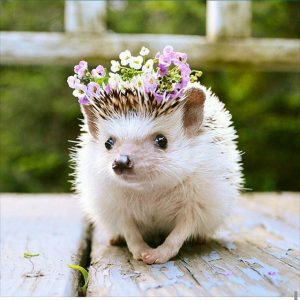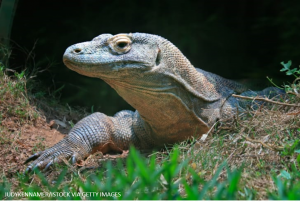The importance of species charisma for conservation
Certain animals possess charismatic properties and traits that distinguish them in relation to human perception and can stimulate public affection. Examples include pandas, polar bears, and lions. Lorimer [1], identifies three different types of charisma; ecological, aesthetic and corporeal. It is important to identify which traits are making a species charismatic, since charisma can play a very important role in their conservation. Species with desirable and charismatic properties can serve as flagships of contemporary environmentalism.
Flagship species can be defined as popular charismatic species that appeal to the target audience and serve as symbols to conservation campaigns to raise awareness and stimulate action [2, 3].
In this article, we are going to explore what traits make a species charismatic as well as refer to how a charismatic species can be perceived differently by the Westerns and the natives. Following that, we will investigate why it is so important to identify these charismatic traits which often help a species conservation but can also hinder conservation efforts.
What makes a species charismatic?
Aesthetic charisma
Many of the discussions about species charisma focuses on the aesthetic aspect [3]. This is often referred to the species’ behaviour or its visual appearance from a human point of view. These aesthetic characteristics are capable of triggering strong human emotions. When we refer to aesthetic charisma, we also refer to adjectives such as “cute and cuddly”. Albert et al. [4], tried to identify the 20 most charismatic species and found that 19 out of the 20 selected species were described as “cute” by the survey’s participants. Another research suggests that highly appealing animals are the species that are phylogenetically or physiognomically closer to humans, for example, anthropomorphized forward‐facing eyes or human-like hands [5]. Something that needs to be mentioned though, is that this is not always true given that many species that do not possess aesthetic charisma are routinely visually anthropomorphized in many media and movies (e.g. Nemo) for sympathy reasons.

Figure 1. Aesthetic charisma in animals. I mean how “cute” is this!? [7]
Ecological Charisma
Quoting Lorimer (2009) [6] – “Ecological charisma refers to the ease with which a place or organism is perceived by the witnessing human subject. To trace the ecological charisma of a nonhuman requires an ethological perspective”. These ecological charismatic characteristics stand out to humans because of our “common” biology. As mentioned above, in Albert et al.’ study they observed that from those 20 most charismatic species selected, there were some obvious characteristics that seemed to be prevalent. For example, 19 out of 20 species were larger than humans, which makes them impressive and therefore worth admiring. Also, 18 out of 20 species were mammals which means that we share common evolutionary biology with them as well as common young rearing behaviours. Furthermore, 17 out of 20 were terrestrial species, just like humans are. These characteristics also determine the detectability of an organism and the ease with which a human is able to observe and connect to its behaviour [3].
Corporeal Charisma
The corporeal charisma, is the emotional connection and multi-sensory experiences (e.g. touching) formed by physical interactions with an animal. Practical encounters with species make people fonder of protecting them. For example, conservation tourism is often publicized by using dramatic close-up photography of volunteers touching or holding charismatic species such as African lion cubs and Costa Rican sea turtles [8].
Contextually Specific Charisma
One must keep in mind though that charismatic characteristics are contextual, embodied, and culturally- specific, therefore different people with different values find different species to be charismatic [9]. Orangutan is often used in many NGO’s conservation campaigns that target to appeal to the Western population. For the local people in Borneo though, the use of orangutans as campaign promoters is perceived by them that the West world rates orangutans more highly than the local people. This shows that raising the profile of particular species may create resentment amongst people who share their geographical range. Prioritizing some animals and using flagship species, such as the orangutan, may turn local people from developing countries against the conservation efforts that are often imposed on them. One might suggest that charismatic species should be translated into stories and symbols that “speak” across cultures so that they can be better understood.
Why does a species’ charisma matter in conservation?
Raises awareness and money

Figure 3. Komodo Dragon [12]
Several conservation efforts lack funding and support, therefore there is a need for researchers to use conservation marketing to help them produce campaigns that are more relevant to humans and hence effective [5]. An example of a conservation marketing effort is the use of the flagship species campaigns. Flagship species are commonly used to raise awareness and funding concerning conservation issues, encourage habitat conservation, and act as a focus for community‐based conservation [10]. An example of a flagship species that acts as a conservation flagship due to its role as a tourist attraction, is the Komodo Dragon [11]. This lizard is confined in the islands of Komodo National Park (KNP). Every year, many tourists visit this region to learn more about the Komodo Dragon, leaving behind money not only to the national park to continue its conservation efforts but also to the surrounding community, creating a substantial revenue. KNP’s commodification from tourism also results in the protection of the area’s wider biodiversity and maintains a positive local attitude towards its conservation by minimizing human-wildlife conflict.
Research on charismatic species may create knowledge shortfalls for other species
Critics of the charismatic species-focused approach argue that the use of charismatic species may hinder conservation in some ways, because it wastes resources and often does not benefit broader biodiversity spectrums. Even though the use of charismatic species to elicit funding for research is easier, it is debatable whether it should be done this way. Brodie [13] showed that conservationists often focus their conservation programs and studies on areas that are not the most urgent in ecological terms. Research effort is significantly skewed towards large body-size feline cats, but not to the actual threat status or geographical range and/or size of the species. This in turn may create shortfalls to our conservation knowledge.
While flagship species and notably aesthetic and charismatic species have both contributed and hindered integrated conservation actions, umbrella species can replace this concept. They are species that need large tracts of land as habitat and therefore saving them will automatically save many other species.
References
[1] Lorimer J. (2007).Nonhuman Charisma. Environment and Planning D: Society and Space. 25(5), 911-932.
[2] Heywood, V. H., & Watson, R. T. (1995). Global biodiversity assessment (Vol. 1140). Cambridge: Cambridge university press.
[3] Simberloff, D., & Stiling, P. (1996). How risky is biological control?. Ecology, 77(7), 1965-1974.
[4] Albert, C., Luque, G. M., & Courchamp, F. (2018). The twenty most charismatic species. PloS one, 13(7), e0199149[5] Smith, R. J., Veríssimo, D., & MacMillan, D. C. (2010). Conservation and marketing: how to lose friends and influence people. Trade-offs in Conservation: Deciding What to Save. Wiley-Blackwell, Oxford, UK, 215-232.
[6] Lorimer J. (2009). Natures, Charismatic. International Encyclopedia of Human Geography. Elsevier, pp. 324-330. ISBN 9780080449104.
[7] 1. Pinterest [Internet]. Pinterest.jp. [cited 2021 Jul 8]. Available from: http://www.pinterest.jp
[8] Cousins, J. A., Evans, J., & Sadler, J. P. (2009). ‘I’ve paid to observe lions, not map roads!’–An emotional journey with conservation volunteers in South Africa. Geoforum, 40(6), 1069-1080.
[9] Meijaard, E., & Sheil, D. (2008). Cuddly animals don’t persuade poor people to back conservation. Nature, 454(7201), 159-159.
[10] McGowan, J., Beaumont, L. J., Smith, R. J., Chauvenet, A. L., Harcourt, R., Atkinson, S. C., … & Possingham, H. P. (2020). Conservation prioritization can resolve the flagship species conundrum. Nature communications, 11(1), 1-7.
[11] Walpole, M. J., & Leader-Williams, N. (2002). Tourism and flagship species in conservation. Biodiversity and conservation, 11(3), 543-547.
[12] JUDYKENNAMER/ISTOCK VIA GETTY IMAGES
[13] Brodie, J. F. (2009). Is research effort allocated efficiently for conservation? Felidae as a global case study. Biodiversity and Conservation, 18(11), 2927-2939.
